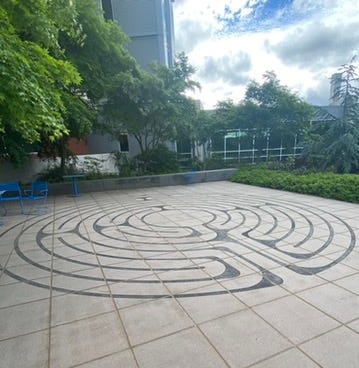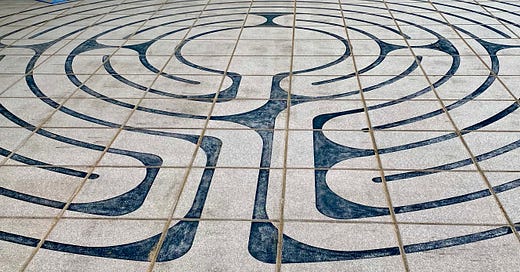Getting Back on the Path
Figuring out who we are is one of the most challenging aspects of healing.
From now until the end of May, along with a few scheduled posts, I plan to reflect on my search for identity. The impact of trauma during the developmental phases of life stands in the way of identity formation. Figuring out who we are is one of the most challenging aspects of healing. I am choosing to search out loud in the hope that it provides hope for others.
If you choose the wrong path on this journey called life, it is sure to result in burnout. I do not believe there is only one path to be taken—how limiting—but I do know that some paths, even when good things happen on those paths, are probably not the ultimate choice. The amazing thing about a growing faith is understanding that God just keeps guiding and bringing good to us.
This is a story about how I stayed on the path
until I got lost, all the important opportunities I had while wandering about,
and how I found my way back.
People who have come to know me in the past two years know me as an advocate for those who have been harmed intentionally or unintentionally by practices and teachings in faith communities.
People who came to know me before publishing Trauma in the Pews see me as a trauma-informed advocate for survivors of childhood trauma
People who came to know me during my mid-adult years know me as a teacher educator in ministry preparation colleges.
People who came to know me as a young adult know me as a preschool/kindergarten teacher and director in faith-based schools. (read more about this at my blog: Ministry: Was I Idealistic or Right?)
If you read Trauma in the Pews carefully, the emphasis on attachment needs during childhood is evident. This has knowingly and unknowingly been the theme of my work since I was a young adult. The understanding of how trauma also impacts child development was a concept I did not understand until I began healing ten years ago. (Last week’s Creative Thursday about this realization: Writing a Guest Blog)
I stayed true to my primary mission for most of my life by focusing on children. Even my doctoral emphasis was in early childhood. My dissertation was a research study on how teachers’ views of the child —innocence to non-innocence—impact their chosen teaching methodology. My work with survivors emphasizes attachment and inner-child healing. My board service with the Attachment & Trauma Network (ATN) also fits well as does teaching for Tabor College’s MEd. in Neuroscience and Trauma.
And then there were derailments . . . .
Working to help faith communities understand what it means to be trauma-informed, sensitive, and responsive was a slight derailment. Not that it wasn’t an important derailment! The years spent teaching in ministry preparation colleges—along with a deep understanding of the impact of trauma on spiritual practices—allowed me to create a powerful resource. I hope the foundational theme of attachment in Trauma in the Pews is recognized!
Then came religious trauma and I was totally derailed. Not that it wasn’t an important derailment! My husband showed me a meme with a quote that said, “I heal loudly because, for most of my life, I suffered silently.” That is what I have done with my religious trauma experiences. I didn’t expect the stories others shared to dig so deeply into unhealed places—an indication that those traumatic experiences were not well-processed. I have been healing quite loudly. The Religious Trauma series (including the Honor Series) was my attempt to get back on the path.
Back to the path . . .
My daughter had surgery last week at Good Samaritan Hospital in Puyallup, WA (she is recovering well). About midday I decided to go for a walk and to my surprise, I came across a courtyard with a labyrinth. It took some doing to get to it without being locked out of the building but once there, I knew the answer to my May wondering/wandering was waiting for me
As I followed the path to the center, I reviewed my past seven months of healing. It has been complicated, arduous, disorienting, and finally clarifying. When I got to the center, I knew that what happened to me as an infant had always been at the core of both my mental anguish and life passion.
I stood there asking, “God, where do I go now?” And then I looked up and saw that the labyrinth was located directly in front of the Family Birth Center. It is hard to explain how centered I became at that moment. The attachment relationship has always been a distinguishing hallmark of my work. I walked the on the path out of the labyrinth with renewed clarity.
Yes, the derailments were profitable, but it was time to get back on the path. My passion and work have always been about the needs of very small humans. Ten years of healing both inform and motivate me. I understand this so much better than I did as a young adult!






